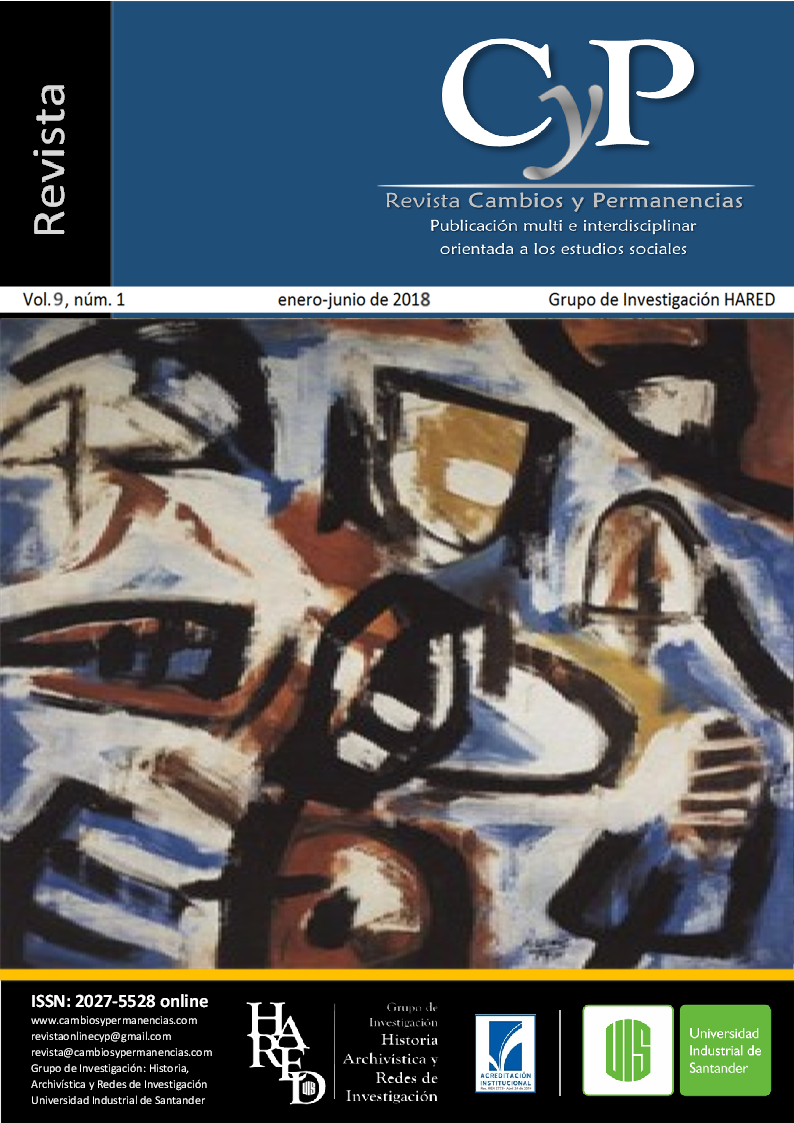Published 2018-06-01
Keywords
- Arturo Alapa,
- Language,
- nation,
- conflict,
- Colombian Literature
How to Cite
Abstract
Colombia is currently going through an important time in its history where culture is a major part in the consolidation for peace. Considerations about the official history of Colombian conflict in art have become a main theme for analysis. For the purpose of confronting the single narrative of the conflict with other voices, it is necessary to save from obscurity the work of engaged artists who developed a reactionary language addressing the official discourse. Among them stands out Arturo Alape’s work. Alape builds up a language which gives voice to the armed conflict in Colombia. He looks at the different elements that shape the war taking into account his own experience and the voices of those who also have been involved.
Downloads
References
Adorno, T. (2014). Teoría Estética. Madrid: Akal.
Alape, A. (1970). Diario de un guerrillero. Bogotá: Ediciones Abejón Mono.
Alape, A. (1972). Las muertes de Tirofijo. Bogotá: Ediciones Abejón Mono.
Badiou, A. (2004). La ética. México: Ediciones Herder.
Barnet, M. (1992). La novela testimonial: Alquimia de la memoria. La palabra y el hombre. 83, pp. 75 – 78.
Figueroa, C. R. (2004). Gramática – Violencia: Una relación significativa para la narrativa colombiana de la segunda mitad del siglo XX. Tabula Rasa. 2, pp. 93 – 110.
Lienhard, M. (2000). Voces marginales y poder discursivo en América Latina. Revista iberoamericana. LXVI(193), pp. 785 – 798.
Medina Gallego, C. (2010). FARC-EP y ELN, Una historia política comparada. (Tesis doctoral). Universidad Nacional de Colombia. Bogotá.
Ortiz, L. (2002). Narrativa testimonial en Colombia. En María Mercedes Jaramillo, Betty Osorio Y Ángela Inés Robredo (Eds.), Literatura y Cultura. Narrativa Colombiana del siglo XX. Hibridez y alteridades 3. Colombia: Ministerio de Cultura.
Ramírez, J. (5 de octubre de 2016). EL no ha sido la campaña más barata y más efectiva de la historia. La República. Recuperado de http://www.larepublica.co/el-no-ha-sido-la-campa%C3%B1a-m%C3%A1s-barata-y-m%C3%A1s-efectiva-de-la-historia_427891
Revista Semana. (28 de mayo de 2016). ¿Hay crisis de la cultura en Colombia? Revista Semana. Recuperado de http://www.semana.com/cultura/articulo/cultura-y-su-papel-en-el-posconflicto/475468
Rueda, M. H. (2008). Nación y narración de la violencia en Colombia (De la historia a la sociología). Revista iberoamericana. LXXIV(223), pp. 345 – 359.
Vásquez – Zawadzki, C. (2003). País de memoria: Diálogos con Arturo Alape. Cali: Universidad del Valle.
Von der Walde, E. (1997). Limpia, fija y da esplendor: El letrado y la letra en Colombia a fines del siglo XIX. Revista iberoamericana. LXIII(178-179), pp. 71 – 83.
Zizek, Slavoj. (2008). En defensa de la intolerancia. Madrid: Ediciones Sequitur.


